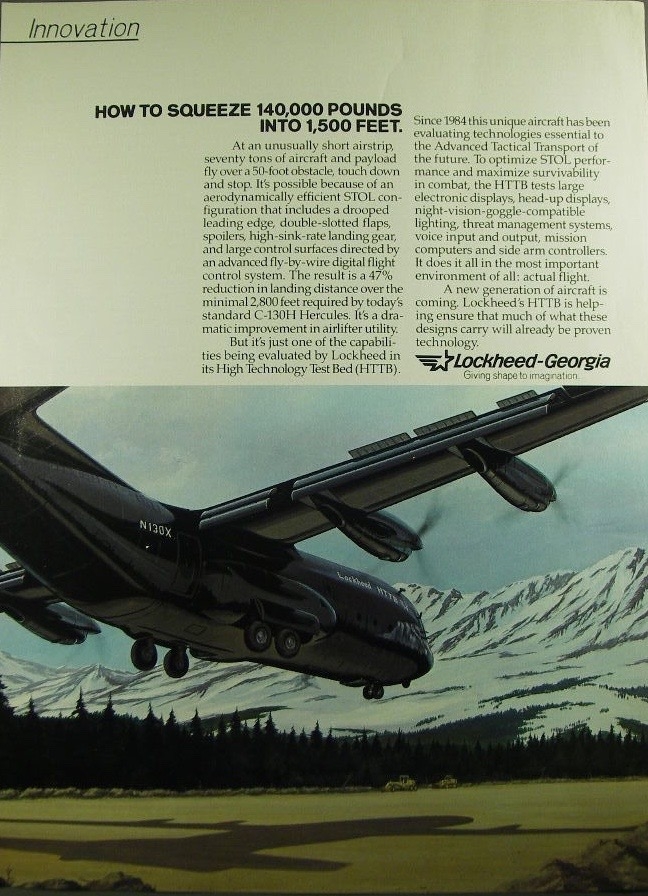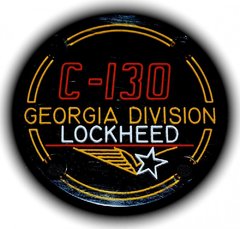HTTB-N130X.jpg
Innovation
HOW TO SQUEEZE 140,000 POUNDS
INTO 1,500 FEET.
At an unusually short airstrip, seventy tons of aircraft and payload fly over a 50-foot obstacle, touch down and stop. It’s possible because of an aerodynamically efficient STOL configuration that includes a drooped leading edge, double-slotted flaps, spoilers, high-sink-rate landing gear, and large control surfaces directed by an advanced fly-by-wire digital flight control system. The result is a 47% reduction in landing distance over the minimal 2,800 feet required by today’s standard C-130H Hercules. It’s a dramatic improvement in airlifter utility.
But it’s just one of the capabilities being evaluated by Lockheed in its High Technology Test Bed (HTTB).
Since 1984 this unique aircraft has been evaluating technologies essential to the Advanced Tactical Transport of the future. To optimize STOL performance and maximize survivability in combat, the HTTB tests large electronic displays, head-up displays, night-vision-goggle-compatible lighting, threat management systems, voice input and output, mission computers and side arm controllers. It does it all in the most important environment of all: actual flight.
A new generation of aircraft is coming. Lockheed’s HTTB is helping ensure that mush of what these designs carry will already be proven technology.
Lockheed-Georgia
Giving shape to imagination



Recommended Comments
There are no comments to display.
Join the conversation
You can post now and register later. If you have an account, sign in now to post with your account.